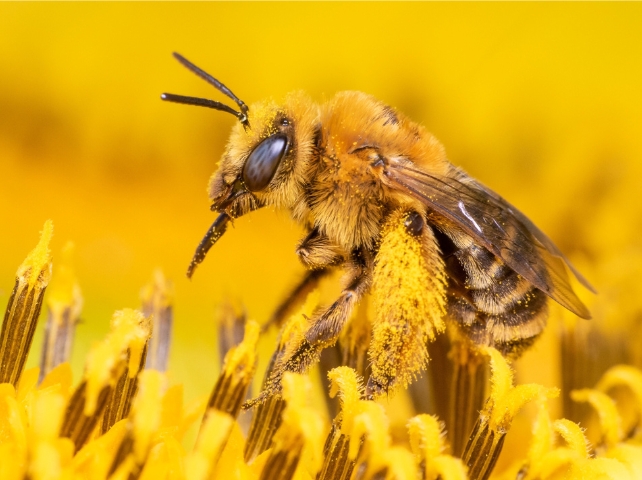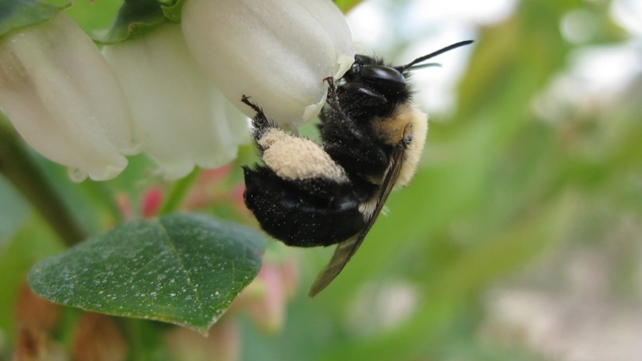A few of our favourite meals crops all over the world aren’t reaching their full potential due to fewer visits from the bugs that pollinate them, a brand new research has discovered.
Bugs that present the essential service of pollination are declining en masse, and that has severe penalties for the world’s meals crops, 75 p.c of which rely not less than partially – if not fully – on insect pollination.
Whereas this does not embrace main meals crops like rice and wheat, pollination is important to what the research’s first creator – ecologist Katherine Turo from Rutgers College within the US – refers to as “nutrient-dense and attention-grabbing meals that we like and are culturally related”.
“In the event you look by an inventory of crops and take into consideration which vegatables and fruits you are most excited to eat – like summer time berries or apples and pumpkins within the fall – these are the crops that usually have to be pollinated by bugs,” Turo says.
And but, there is a lack of experimental analysis on pollinator limitation in crops. Whereas we all know the phenomenon is impacting world meals provides, its prevalence has up to now been unclear.
Many research have relied on estimates of most potential yield primarily based available pollination, which might overestimate pollen limitation. Immediately measuring ‘real-world’ impression, by monitoring the variety of insect visits to crop flowers, and the ensuing yield, may give a extra sensible image.
To measure simply how large of a dent pollinator limitation is making in meals manufacturing, the multinational group analyzed some of the complete world datasets of crop pollination, which is monitoring 32 of the main industrial crops and commodities that depend upon pollinators.
This open-source database, CropPol, is a global effort that has up to now captured three many years’ price of information on crop pollinators, flower visits, and pollinations.
Inside this detailed image, Turo and colleagues discovered that as much as 60 p.c of worldwide crop methods are being restricted by inadequate pollination. The phenomenon is affecting 25 of the 49 completely different crop species analyzed, with blueberry, espresso, and apple crops being the worst affected.
Pollinator limitation is happening in 85 p.c of the nations on this database, spanning all six continents represented.

“Our findings are a trigger for concern and optimism,” says Turo.
“We did detect widespread yield deficits. Nevertheless, we additionally estimate that, by continued funding in pollinator administration and analysis, it’s doubtless that we will enhance the effectivity of our present crop fields to fulfill the dietary wants of our world inhabitants.”
The researchers estimate that growing pollinator visitations in low-visitation fields to the degrees being noticed within the best-performing fields might shut the hole between low- and high-yielding fields by 63 p.c.
“If subject managers might enhance consistency throughout high- and low-yield fields, a lot of the noticed yield issues might be addressed,” Turo says.
They discovered pollinator limitation is barely much less doubtless in areas with extra forest land cowl inside 1 kilometer (0.6 miles) of the sphere, and though this impact was not common, it does trace on the function wider ecosystems surrounding farmlands could also be taking part in within the survival of helpful bugs.
However since they didn’t establish any patterns among the many 12 datasets that had been most strongly affected by forests, the authors say additional research is required to raised perceive pollinators’ sensitivity to forested land cowl.

“Crop yields, which measure the quantity of crops grown per unit space of land, are related to assessing the adequacy of the world’s meals provide relative to its inhabitants,” Rutgers ecologist Rachael Winfree says.
“Our findings present that by paying extra consideration to pollinators, growers might make agricultural fields extra productive.”
That is perhaps tougher than it sounds – bugs are being hit with a deadly onslaught of illness, pesticides, shifting seasons, and habitat loss.
Maybe quantifying these tiny however mighty allies’ companies to our billion-dollar industries will assist us to take the threats they face extra critically.
This analysis is printed in Nature Ecology & Evolution.





